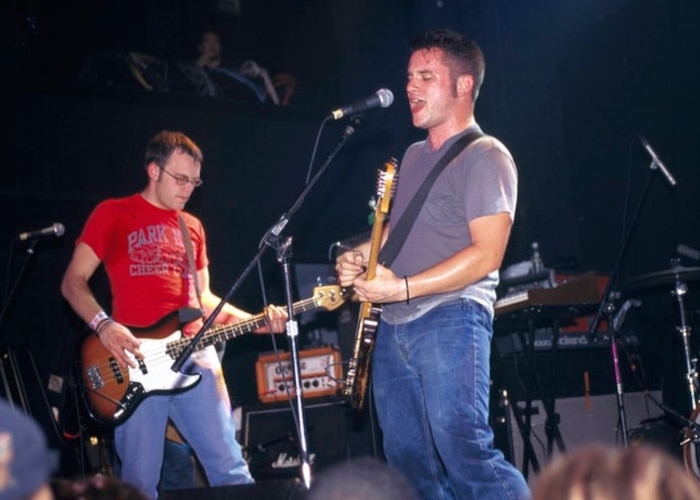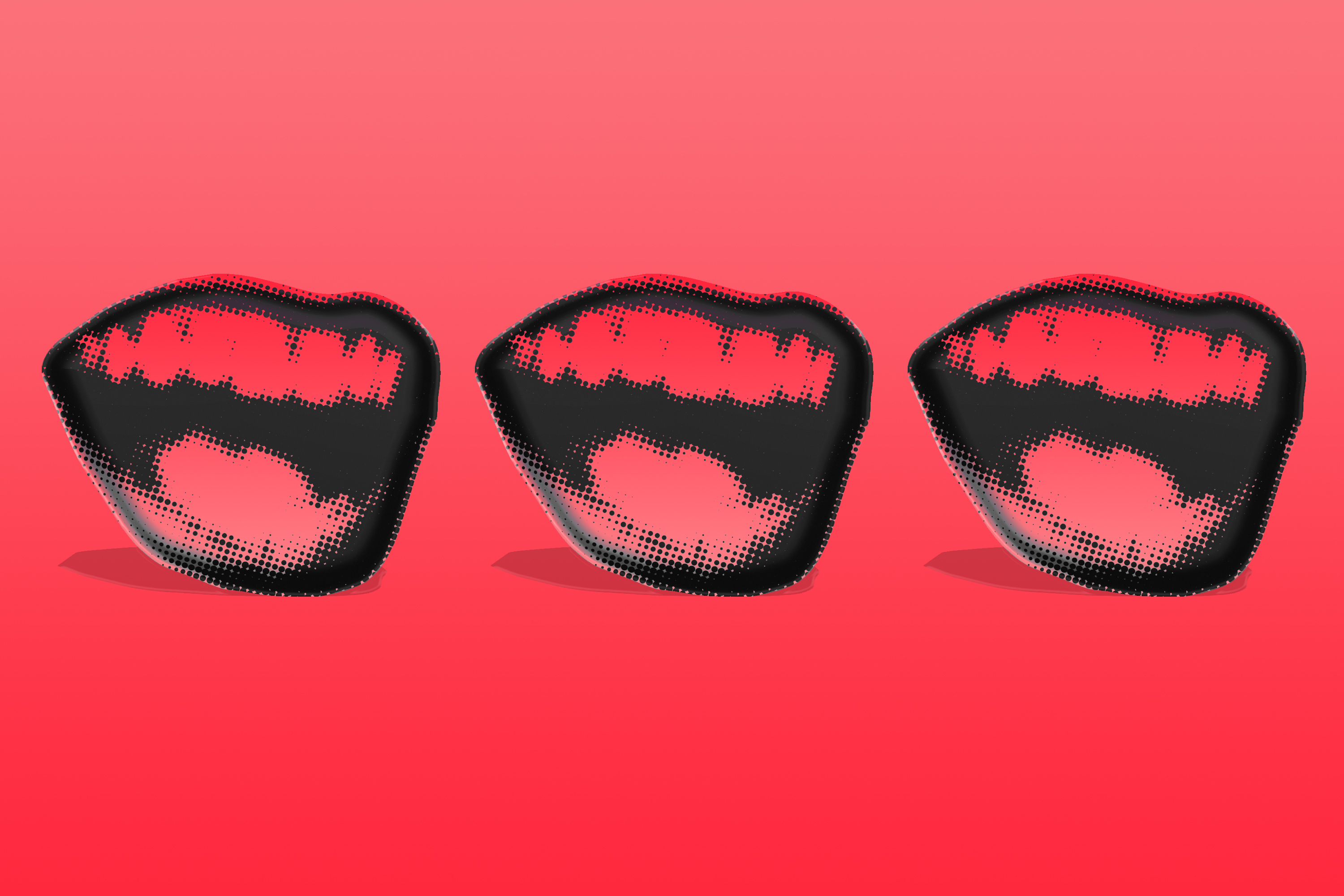The Casualty: Emo’s Last Underground Moment
Eduardo Cepeda looks at 1999 in emo – an inflection point, rich with both statement albums and commercial distractions

In the winter of 2017, New York venue Terminal 5 bubbled with eager anticipation. The line quickly hustled inside as the sold-out crowd – largely comprised of people under 30 – jostled for space while opening band (emo vets Joan Of Arc) blasted through a set of songs old and new. The headliner, American Football, had recently released their second full-length album, LP2, fully 18 years after the first, and 17 years after finishing college and unceremoniously disbanding.
“The youthfulness and naiveté of the performances and lyrics make [LP1] feel relevant to new generations of high school and college kids going through the same feelings and breakups,” says American Football guitarist Steve Holmes. “For better or worse, it has apparently stood the test of time, which is both enormously gratifying and still kind of shocking.”
American Football was never meant as more than a hobby. They didn’t plan to gain any kind of momentum. Even during their short but eventful tenure, they never strove for the limelight. The band played a combination of basement and club shows – 20 at most – before going their separate ways. And though the band hardly made a dent during emo’s so-called “second wave,” the longevity of their 1999 self-titled album proved itself, as its fanbase consistently grew over the years. Now, 20 years later, the band continues to tour and release music, with their much-anticipated third self-titled album LP3 fresh out in Spring of 2019.
“I asked Steve Holmes, ‘Did someone freeze you?’” smirks Tom Mullen of the Washed Up Emo podcast. Their new album, which essentially sounds like a band that never broke up and evolved at a natural pace, chimes with the Get Up Kids’ most recent album, not to mention other releases by At The Drive-In and Cursive. In its contemporary second wave, second wave emo remains alive and well. Some of these groups, like American Football, even boast larger fanbases and increased clout than they held 20 years earlier.
But before Hot Topic, TRL and muddled nostalgia for nu-metal became variously synonymous with the word “emo,” the genre first cautiously dipped its toe in the mainstream, navigating a delicate balance between the DIY values of its hardcore roots, and paying the bills without selling out. Bands who propelled the second wave gained traction, and saw their once-regional scenes go global – albeit on a comparatively niche scale. Those values buckled in the face of peer-to-peer download networks, coupled with an influx of younger fans who were less abhorred by the concept of “selling out.” A generational shift followed that eventually broke emo to the masses.
Records across 1999 like the Get Up Kids’ Something to Write Home About, Promise Ring’s Very Emergency, Jimmy Eat World’s Clarity and even the much-overlooked eponymous debut by American Football delivered a glimpse of a DIY scene on the verge of breaking through. And though it came just one year later, an album like The Swiss Army Romance by Dashboard Confessional felt like it came from an entirely new generation. A schism had opened up with the advent of the new millennium.
During this time, this slowly-bubbling scene suddenly found itself in the spotlight. The sweeping changes that came over the course of the next couple of years rendered it unrecognizable to some. “By the time that I checked out [of the scene] I started to see this slight stratification, and I also started to see a slight sort of commercial interest,” says Norman Brannon, former guitarist for seminal hardcore band Shelter, and later for Texas is the Reason – one of the pivotal second wave emo bands who dissolved on the eve of their major label pivot. “Promise Ring got on MTV. That was a big deal,” he adds.
But emo’s story began almost 20 years prior, in the early ’80s. Storied bands like Rites of Spring and Embrace evolved from straightforward hardcore, and added melodic elements and emotionally vulnerable vocals to the mix. But as is often the case with many subgenres, the very people responsible for their creation often found the designation silly.
“‘Emo-core’ must be the stupidest fucking thing I’ve ever heard in my entire life,” Ian MacKaye (of seminal D.C. groups Minor Threat and Fugazi) said on stage in 1986 with Embrace. “In case you’re wondering,” he continued, “I read in my Thrasher the other day that in fact what my band along with what other bands in the city [are] playing is ‘emo-core.’ Emotional hardcore. As if hardcore wasn’t emotional to begin with.”
It wouldn’t be until the ’90s that bands like Sunny Day Real Estate sidestepped the disdain, doubled down on the work laid by pioneers like MacKaye and catapulted the young genre to higher levels, setting off the so-called second wave of post-hardcore, emo-core – or just “emo” as it came to be known.
No one liked [the word ‘emo’]. The media shat on it, and gave a lot of these records bad reviews, and then ten years later, redeemed them?
Bands like Quicksand, Jawbreaker and Mineral signed to major labels before fizzling away under the expectations – or in some cases, lack thereof. “Mineral got signed but there wasn’t really sort of any massive expectations from Interscope that they were going to be the next big thing. They were just sort of like ‘Let’s give this a shot,’” says Brannon.
But interest continued to grow, and with this growth came opportunity. Many of these second wave bands found themselves wedged between two realities – the DIY past that bore them, and the percolating interest that would translate into mass-commodification. This was something of an awkward transition for emo, and each band navigated it differently.
“When I came back to the scene in 2000 [to start New End Original] selling out wasn’t a thing,” Brannon recalls. “Every single band was now taking tour support or directly courting sponorship. People were having non-musical banners at their merch tables or on their gear. I was thinking: ‘what the hell just happened?’”
Budgets and expectations were expanding, not least in the case of At The Drive-In, who worked with nu metal guru Ross Robinson on Relationship of Command to achieve an MTV-ready, blown-out sound. Mullen notes the sudden shift in acceptance of the genre drew kickback: “The media was always shitting on it. No one liked [the word ‘emo’]. But I feel like it went from zines to Punk Planet to Spin. The media shat on it, and gave a lot of these records bad reviews, and then ten years later, redeemed them?”
Another group landed their third album at the same time as this inflection point was taking place. Jimmy Eat World’s Clarity, released in February of ’99, marked significant growth for the Chandler, Arizona-based band. From the opening song, “Table for Glasses,” the band’s prowess for connecting the broadly defined sounds of emo with an easy-to-digest pop sensibility made them the clear contenders for emo’s first major breakthrough. Fans and critics alike anticipated their rise as they packed out venues across the country.
“Jimmy Eat World obviously were on the road to putting on an album that everyone loved but would basically kill their record deal,” says Brannon, noting that Jimmy Eat World’s previous album, Static Prevails, was also a major label release. Despite a strong opening single, “Lucky Denver Mint,” Clarity went largely ignored outside of their already-loyal fanbase. The album’s lackluster performance could perhaps be attributed to how starkly it stood out on radio at the time. “What was around in 1999 that was similar? Nothing,” reckons Mullen. “By the time [the band’s breakthrough hit] ‘The Middle’ came out, pop-punk was big, and it sort of fit with that,” he adds.
Clarity’s relatively quick fizzle led to Capitol dropping the band, which turned out to be a gift. This gave them the freedom to continue building their fan base with incessant touring, paving a way for their subsequent release, 2001’s Bleed American (hastily changed to be just self-titled after the 9/11 attacks) which secured Jimmy Eat World’s place in the mainstream zeitgeist.
The Get Up Kids’ “Something to Write Home About” was an underground smash – but exposed the limits of where the ceiling lay for independent outfits.
That same summer, a band of similar repute in emo’s second wave would take a completely different route to longevity. Cursive, who formed in the spring of 1995 in Omaha, Nebraska, released two full-length albums – 1997’s Such Blinding Stars for Starving Eyes and 1998’s The Storms of Early Summer: Semantics of Song – before calling it quits. Vocalist Tim Kasher moved to Portland, Oregon with his new wife, while guitarist Steve Pedersen left for law school in North Carolina.
But that interregnum proved to be short-lived, as Kasher’s marriage flamed out and he found himself back in Omaha, reforming Cursive in the summer of ’99 to begin work on Domestica. It is still considered one of the greatest in the genre, a masterpiece of the form that didn’t play into the cynical perspective about the genre’s dash to the path of least resistance, as a crossover onto national radio and MTV beckoned.
Cursive’s trajectory continued this way – even during the peak of emo’s mall-dominating fashionability. Their steadfast position on the fringe of a world that became immensely prominent and profitable throughout the 2000s, thanks in no small part to international superstars such as Fall Out Boy, places them in closest hock to the underground values of emo’s origin.
The multi-platinum selling Jimmy Eat World and perennial underdogs Cursive represent opposing polar tugs for how artists who found themselves in the right time and place in 1999 would go on to map their evolution. A group that fall somewhere in between were the Get Up Kids. Something to Write Home About, released curiously on the same day as American Football’s LP1, was an underground smash – but exposed the limits of where the ceiling lay for independent outfits.
Two years prior, as a young band with their debut (Four Minute Mile) flying out of select record stores, the Get Up Kids quickly outgrew their label Doghouse Records. The rapid growth of the band outpaced both the Kansas City scene around them, and the label’s ability to keep up with demand. The majors came calling, but though the band came close to signing with Mojo Records, the deal fell through. At that point, the band’s manager, Rich Egan suggested they sign to his small label, Vagrant. Signing to a label owned by the band’s manager was an unconventional move at the time, but ultimately the band trusted Egan’s vision, and signed on.
As Eric Grubbs unpacks in his book on second wave emo, Post, the small label had to borrow $50,000 from co-owner Jon Cohen’s parents to sign the band, meaning the record’s failure would spell absolute doom for the label. But the gamble paid off for both parties, in effect helping to launch the Get Up Kids, and Vagrant, to a new indie stratosphere.
The album moved 140,000 copies upon release, helping finance the Get Up Kids’ own imprint under Vagrant, Heroes and Villains, as well as signings for the parent label of groups like Alkaline Trio, Saves the Day and Dashboard Confessional – acts that, combined, have sold over five million records in the United States alone.
The latter of those three gave emo a true springboard into the big time nationally. The scene’s lack of a veritable star changed when the young, good-looking frontman of Florida post-hardcore band Further Seems Forever traded feedback and an exhausting schedule of late-night load-ins at no-mark venues for an acoustic guitar. Dashboard Confessional, the solo project of Chris Carrabba, acted as a lightning rod for criticism.
It was easy to criticize Carraba for pandering to tropes around the sappy, shallow emoting that many perceived was all emo had to offer. Many early adopters of the genre did just that as the new millenium rolled around. But bands like Dashboard Confessional and, later, Panic! At The Disco were just part of the natural evolution of a genre then-20 years in the making. The thread connecting Minor Threat and My Chemical Romance exists, however much hardcore vets seek to outrun their infleunce.
Brannon, having been on both sides of emo’s explosion circa 1999-2000, is more generous in his analysis: “Was Chris Carrabba, you know, a cynical ploy to become a teen heartthrob? No. These critics [of the newer generation] were present at the early shows. They were watching, and they loved it. None of us knew he would become huge. He was literally a hardcore kid who picked up an acoustic guitar.”

